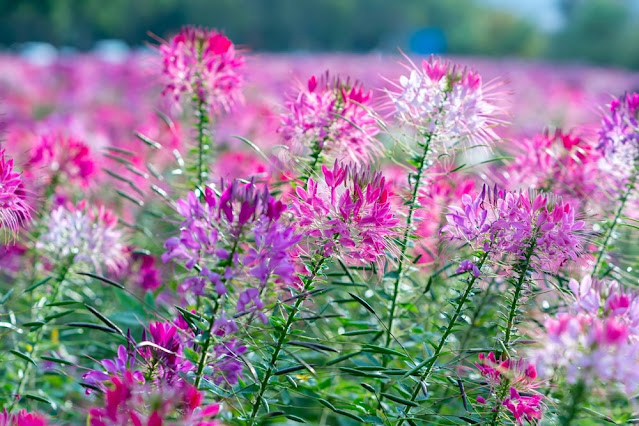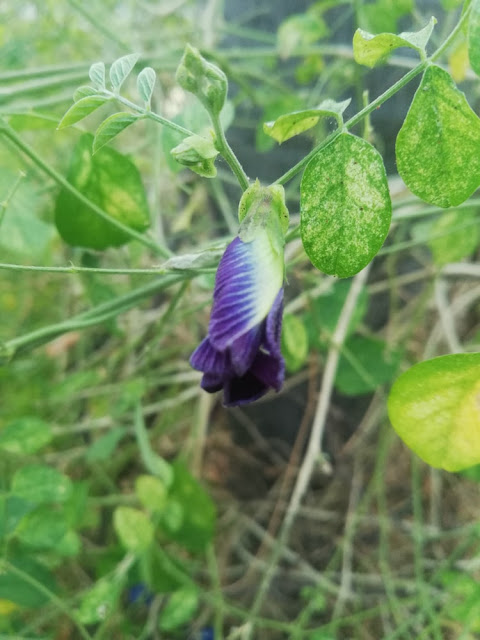Create a Butterfly Pea garden

https://makinggardenblog.blogspot.com/2023/06/create-camellia-garden.html
Creating a Serene Butterfly Pea Garden: A Guide to Design and Cultivation
Introduction : A butterfly pea garden is a delightful and enchanting addition to any landscape. The vibrant blue flowers of the butterfly pea plant (Clitoria ternatea) are not only visually appealing but also possess various health benefits. This comprehensive guide aims to assist you in creating a serene butterfly pea garden that attracts these beautiful winged creatures while providing a peaceful oasis for relaxation and contemplation. From garden design and plant selection to cultivation techniques and maintenance tips, let's embark on a journey to transform your outdoor space into a haven for both butterflies and garden enthusiasts.
Planning and Design : Before delving into the cultivation of butterfly pea plants, careful planning and design are essential to create a harmonious and aesthetically pleasing garden. Consider the following aspects:

https://makinggardenblog.blogspot.com/2023/05/create-water-lilies-garden-in-pond.html
https://makinggardenblog.blogspot.com/2023/05/how-to-create-rosemary-garden.html
a. Location: Choose a site that receives at least six hours of sunlight per day, as butterfly pea plants thrive in full sun. Ensure that the area is well-drained to prevent waterlogging.
b. Space and Size: Determine the size of your garden based on available space. Butterfly pea plants can be grown in containers, raised beds, or traditional garden beds, depending on your preference.
c. Companion Planting: Incorporate companion plants that attract butterflies and enhance the visual appeal of your garden. Consider including plants like milkweed, lavender, zinnia, and marigold, which are known to attract butterflies.
d. Hardscape Features: Add elements such as trellises, arbors, or decorative fences to create vertical interest and provide support for climbing varieties of butterfly pea plants.
e. Seating and Relaxation Areas: Designate cozy corners or seating areas where you can unwind and enjoy the beauty of your garden up close.
Soil Preparation and Planting : Creating a healthy growing environment is crucial for the success of your butterfly pea garden. Follow these steps to prepare the soil and establish your plants:

https://makinggardenblog.blogspot.com/2023/05/create-your-garden-at-home_25.html
a. Soil Testing: Conduct a soil test to determine its pH level and nutrient content. Butterfly pea plants prefer a slightly acidic to neutral soil with a pH range of 6.0 to 7.0.
b. Soil Amendments: Based on the soil test results, amend the soil as necessary to ensure it is well-draining and fertile. Incorporate organic matter such as compost or well-rotted manure to improve soil structure and nutrient content.
c. Plant Selection: Choose the appropriate butterfly pea varieties for your garden. Consider factors such as plant height, flower color, and growth habit. Common varieties include 'Blue Butterfly,' 'Double Blue,' and 'White Butterfly.'
d. Planting Technique: Dig a hole slightly larger than the root ball of the plant. Place the plant in the hole, ensuring it sits at the same depth as it was in the container. Backfill with soil, firm gently, and water thoroughly.
e. Spacing: Space the plants according to their growth habit, typically between 6 to 12 inches apart. Provide ample room for the plants to spread and climb if you have chosen climbing varieties.
Care and Maintenance: To ensure your butterfly pea garden thrives, regular care and maintenance are essential. Follow these guidelines to keep your plants healthy and vibrant:

https://makinggardenblog.blogspot.com/2023/05/making-coconut-garden.html
https://makinggardenblog.blogspot.com/2023/05/making-sunflower-garden.html
a. Watering: Provide sufficient water to keep the soil consistently moist but not waterlogged. Water deeply to encourage healthy root development, especially during dry spells.
b. Mulching: Apply a layer of organic mulch around the plants to conserve moisture, suppress weed growth, and regulate soil temperature. Avoid placing mulch too close to the plant's stem to prevent rotting.
c. Fertilization: Feed your butterfly pea plants with a balanced, slow-release fertilizer during the growing season. Follow the manufacturer's instructions for dosage and application frequency.
d. Pruning: Regularly prune the plants to promote bushier growth and encourage more flowering. Remove any dead or damaged stems and spent flowers to maintain the plant's overall health and appearance.
e. Pest and Disease Management: Monitor your plants for common pests like aphids or caterpillars. Use organic pest control methods, such as handpicking or introducing beneficial insects, to manage infestations. Proper sanitation practices and good airflow will help prevent diseases.
Butterfly Attraction and Conservation: Creating a butterfly-friendly environment goes beyond growing butterfly pea plants. Consider these additional steps to attract and support butterfly populations:

https://makinggardenblog.blogspot.com/2023/05/how-to-make-cherry-tomatoes-garden.html
a. Provide Nectar Sources: Plant a variety of nectar-rich flowers that bloom throughout the season, ensuring a continuous food source for butterflies. Examples include butterfly bush (Buddleja), lantana, and coneflowers (Echinacea).
b. Incorporate Host Plants: Include host plants in your garden that serve as breeding grounds and food sources for butterfly larvae. Research native host plants specific to your region and incorporate them into your garden design.
c. Avoid Pesticides: Minimize or eliminate the use of chemical pesticides, as they can be harmful to butterflies and other beneficial insects. Instead, opt for natural pest control methods and encourage a balanced ecosystem.
d. Provide Shelter: Create butterfly-friendly habitats by incorporating diverse vegetation, such as shrubs, grasses, and trees. These provide shelter, protection from predators, and roosting sites for butterflies.
e. Educate and Share: Spread awareness about the importance of butterfly conservation. Engage with your local community and share your knowledge and experiences, inspiring others to create butterfly-friendly spaces.
Conclusion : Creating a butterfly pea garden not only adds beauty and tranquility to your landscape but also contributes to the conservation of these graceful creatures. By following the steps outlined in this guide, you can design and cultivate a haven that attracts butterflies and provides a serene retreat for yourself and your loved ones. Embrace the process, experiment with different varieties, and enjoy the captivating journey of transforming your outdoor space into a vibrant butterfly pea garden.
https://makinggardenblog.blogspot.com/2023/05/how-to-make-rose-garden-on-roof.htm


Comments
Post a Comment